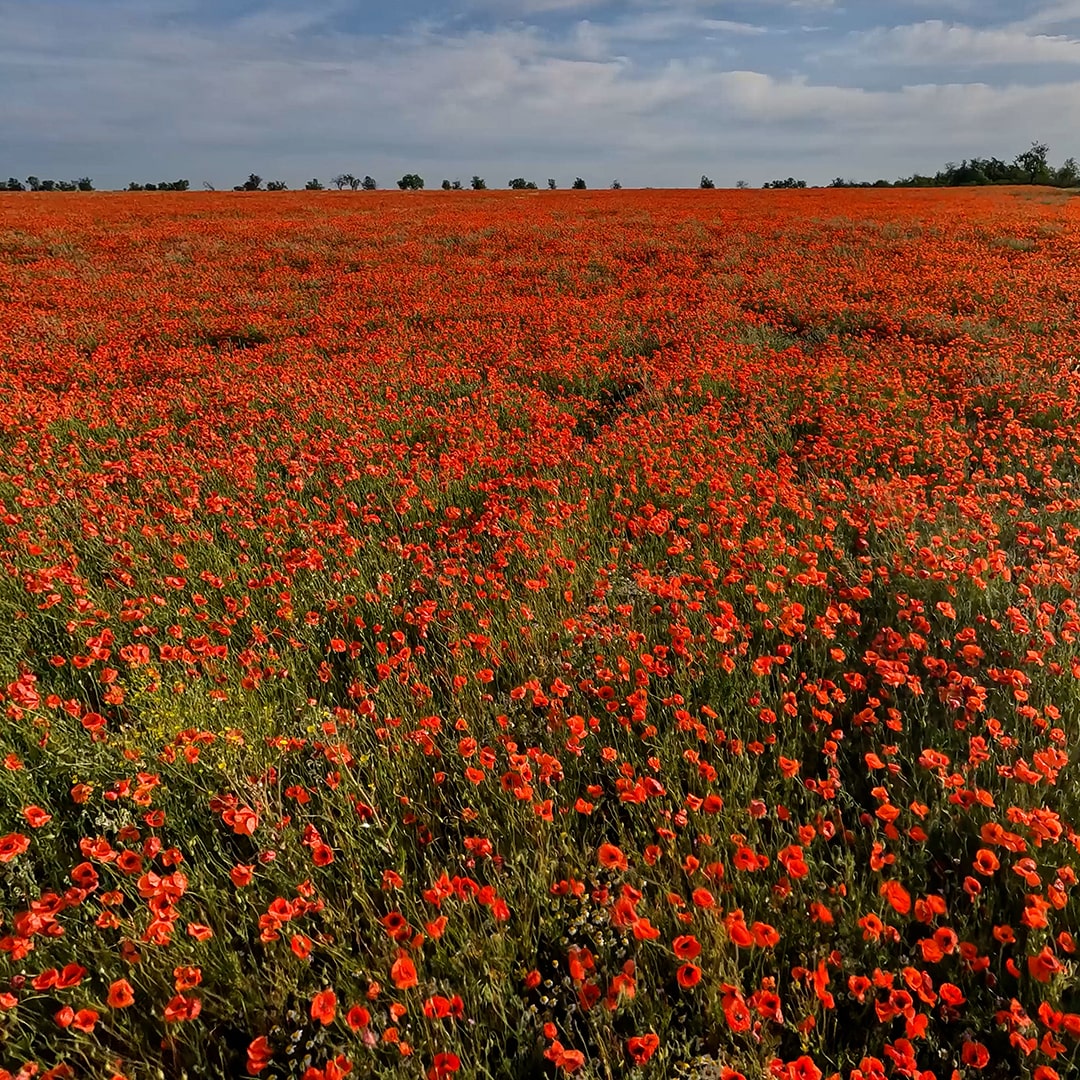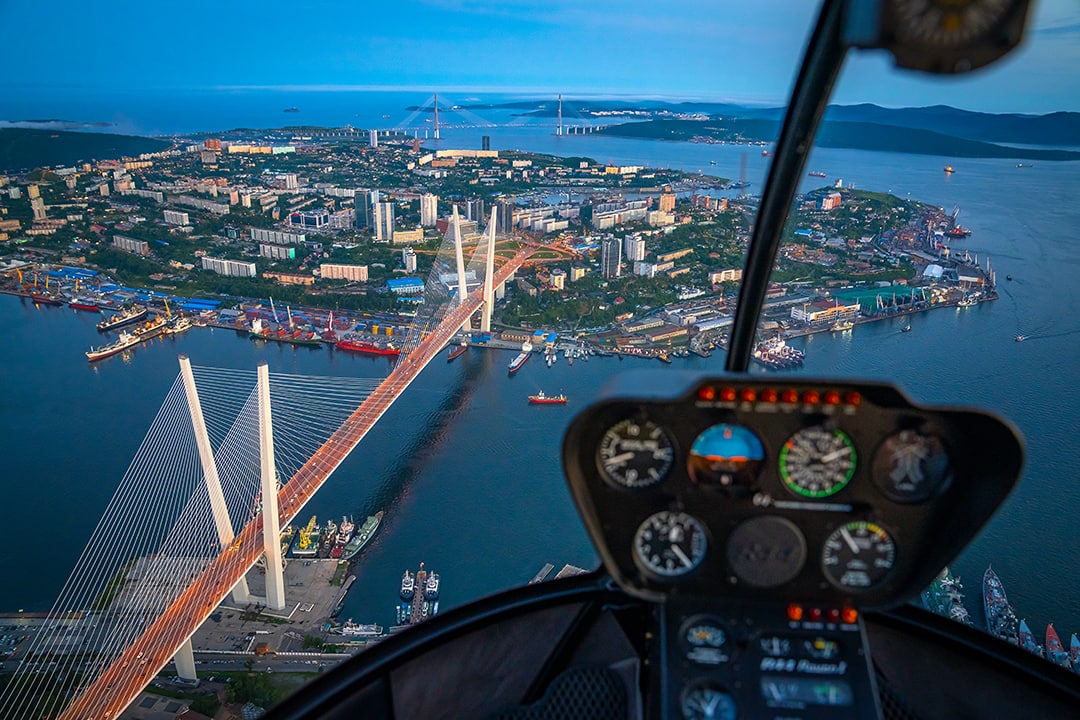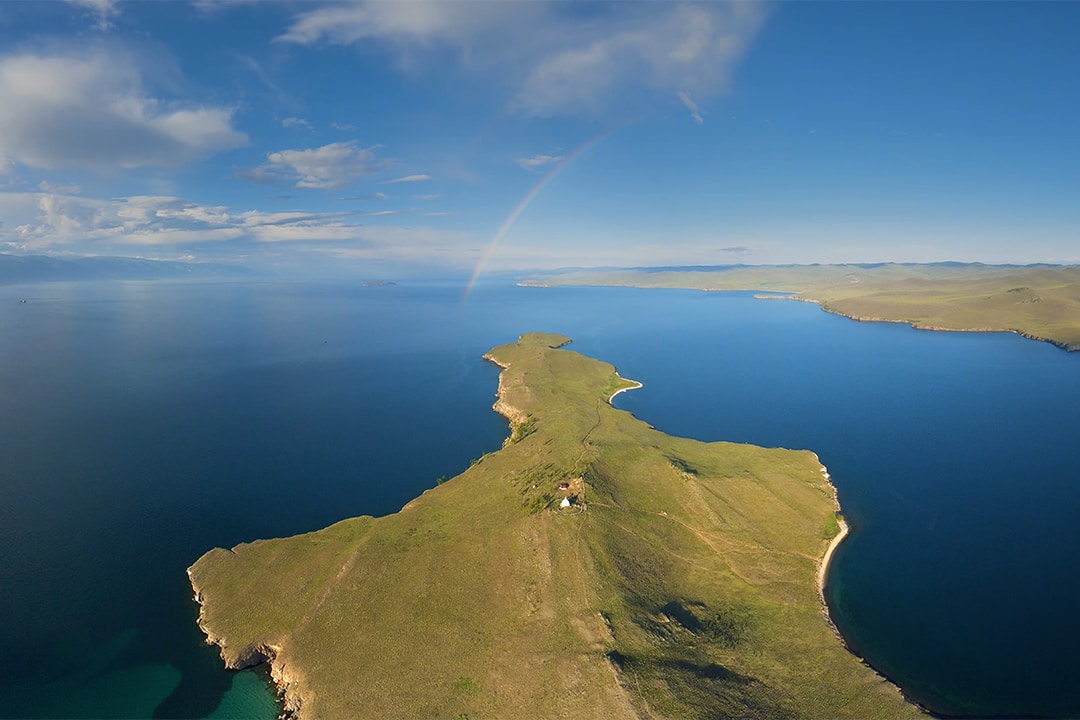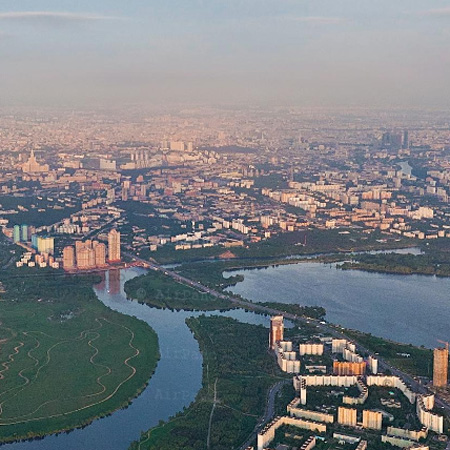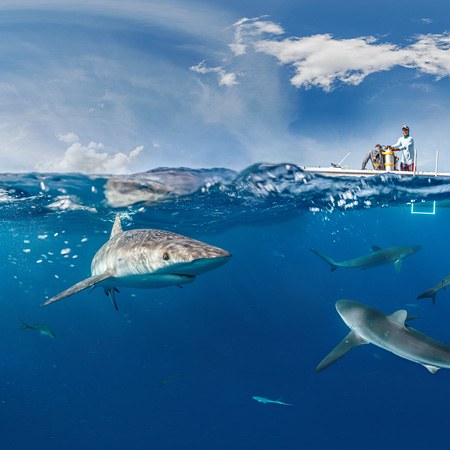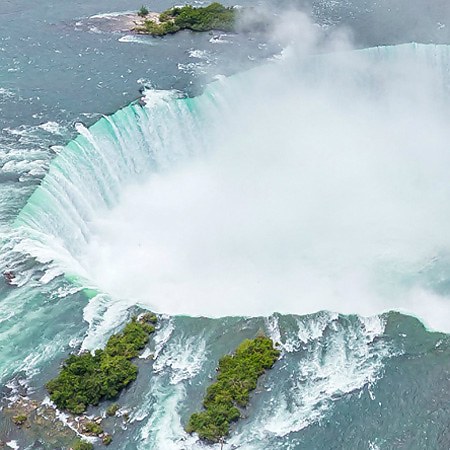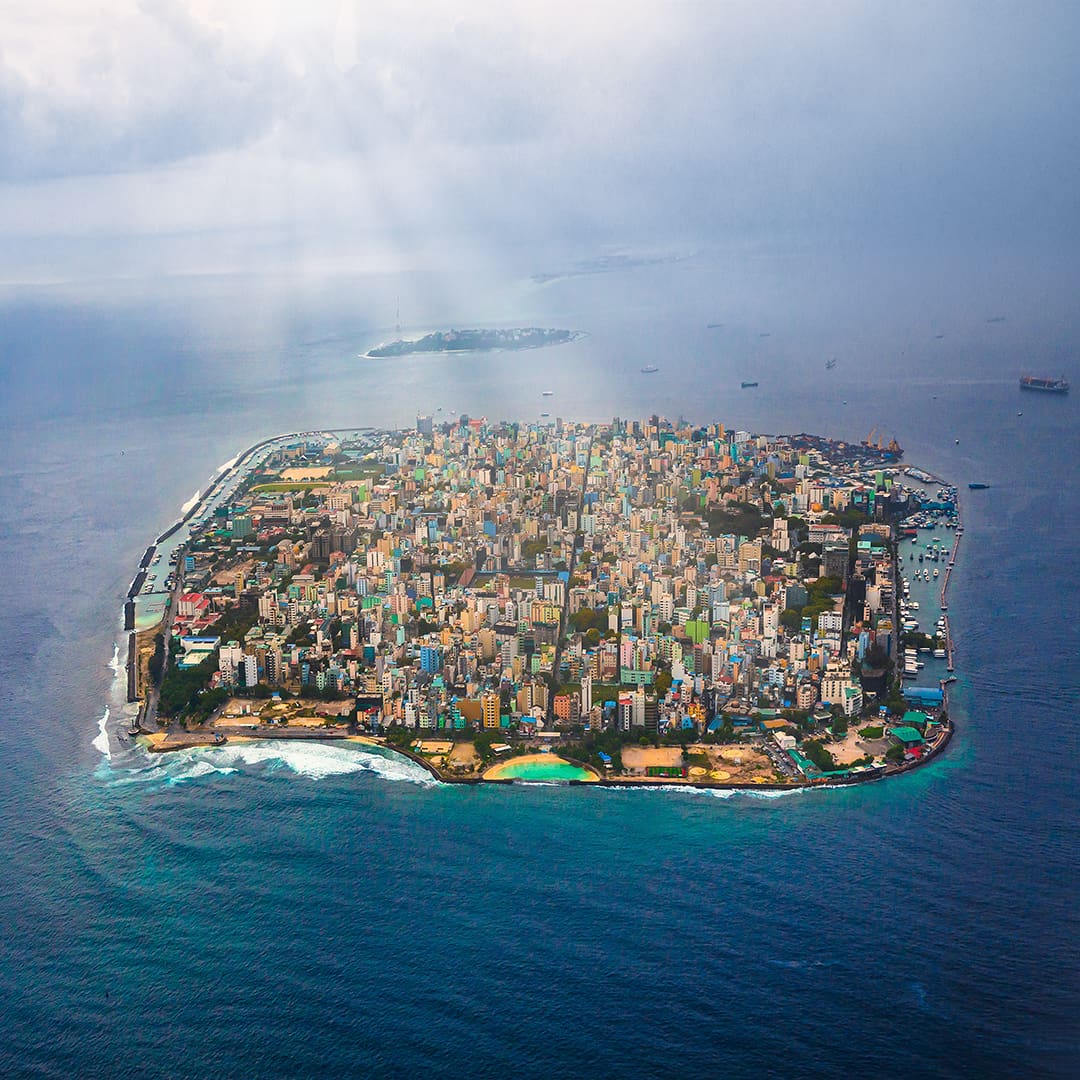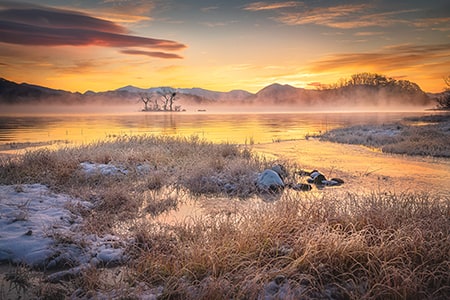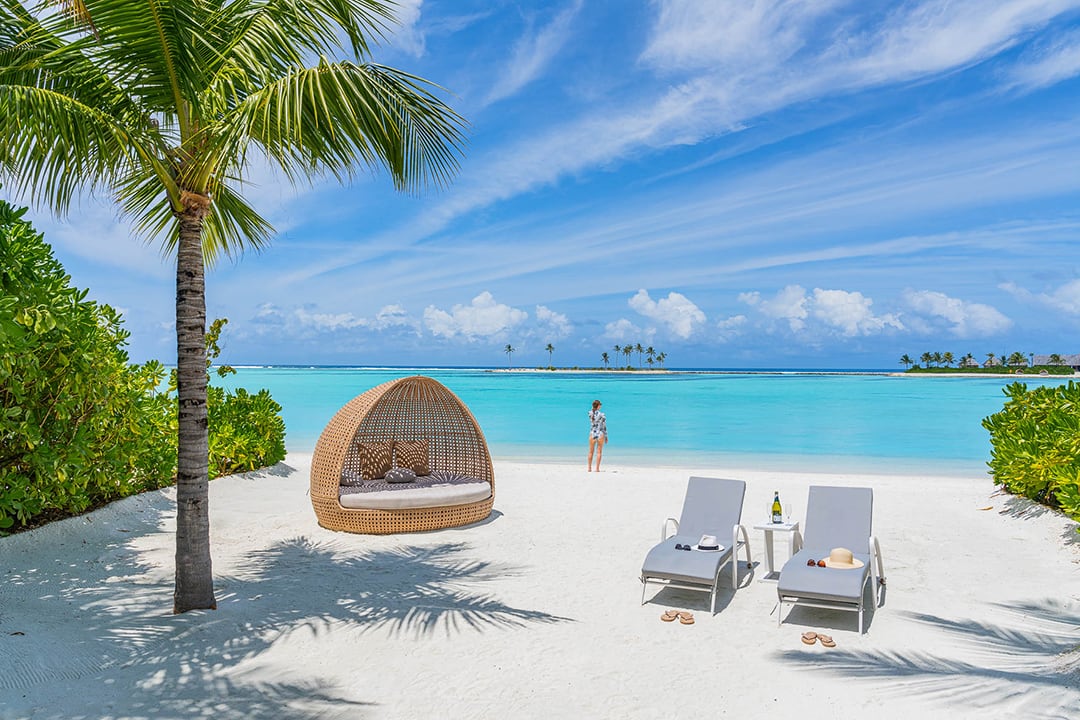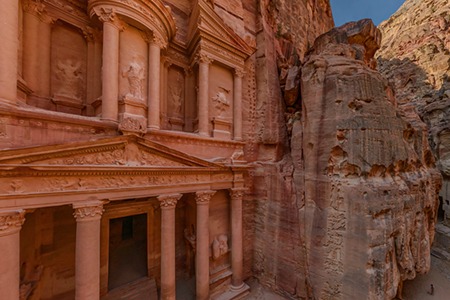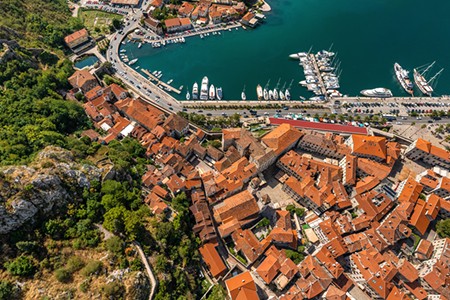Flooding in Amur River, Russia, 2013
As we were wrapping up our two-week long Kamchatka trip and finally getting a better reception on our phones, we suddenly received a new suggestion from our project editor: we had to fly to Khabarovsk to shoot the flood. It was hard to agree because we were exhausted from our previous trip and absolutely unprepared for this one. It took us a couple of hours to make our decision, and here we were — looking down at flooded fields of Amur River near Khabarovsk from our plane's windows instead of our sweet home in Moscow.
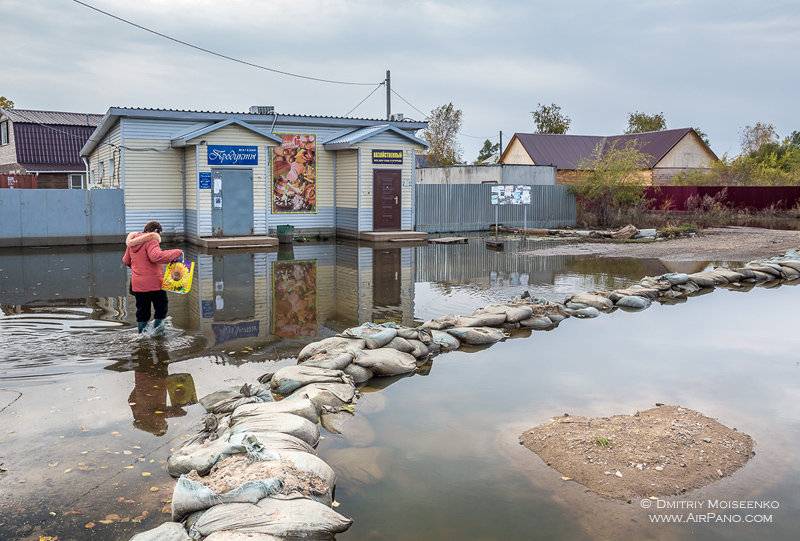
We went to check out city's main Boardwalk right after landing.
To tell you the truth, Khabarovsk city is lucky to have its main port located on top of a high hill with long stairwells going from the city center down to the river. The flood peaked while we were in Kamchatka. At that time water levels in the river raised over eight meters, covering the lower part of the city Boardwalk completely. Right now water level went down to +five meters and the walkways were dry along the riverside, although the walkways were still partially closed for public.
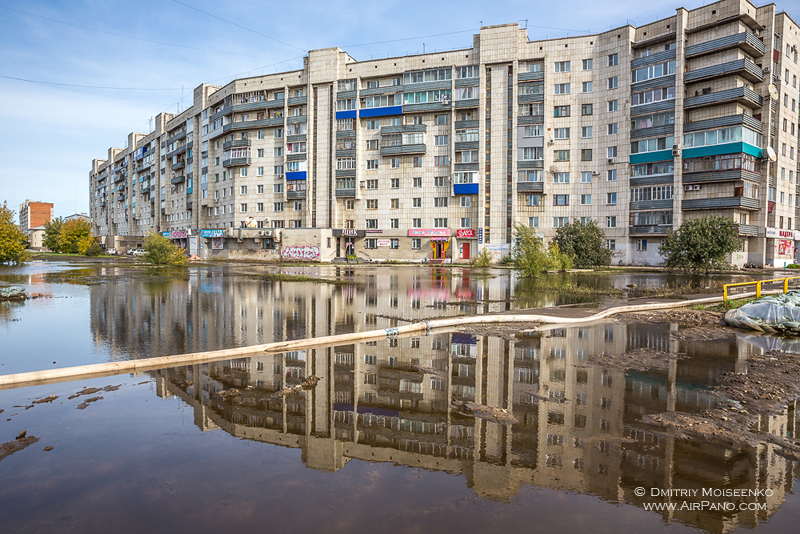
We assembled our RC helicopters right on the pavement and took off. Aleksei, who accompanied us around Khabarovsk, told us that there was a number of islands still under water.
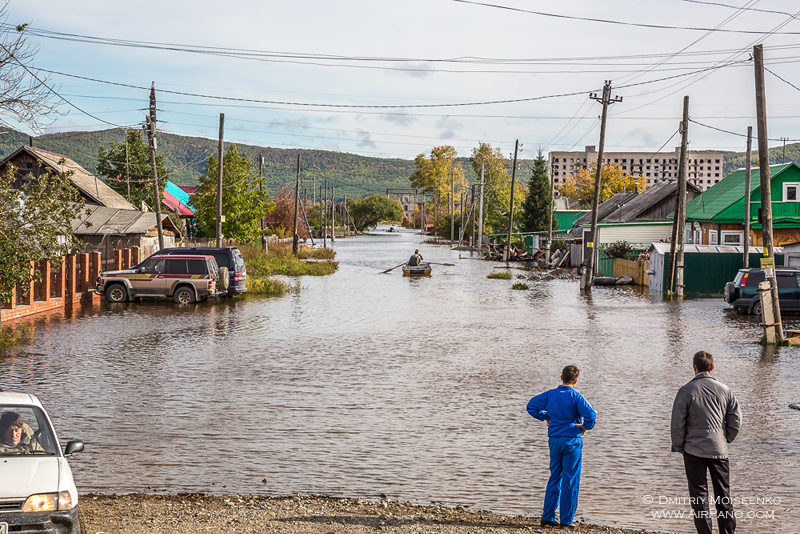
Unlike its outskirts and surrounding areas that were still covered with water, the city itself didn't have much damage. Aleksei's friend told us that his cottage (which was located about thirty kilometers from Amur River) was in the water up to the first floor during the flood peak, and his banya was almost completely underwater.
The following morning we set off to Komsomolsk-on-Amur in our friend's car. The road from Khabarovsk was fine most of the time. However in lower areas damaged by the water road workers made new gravel paths, and everybody moved with a turtle speed over there. Moreover, one of those places is still closed during nighttime.
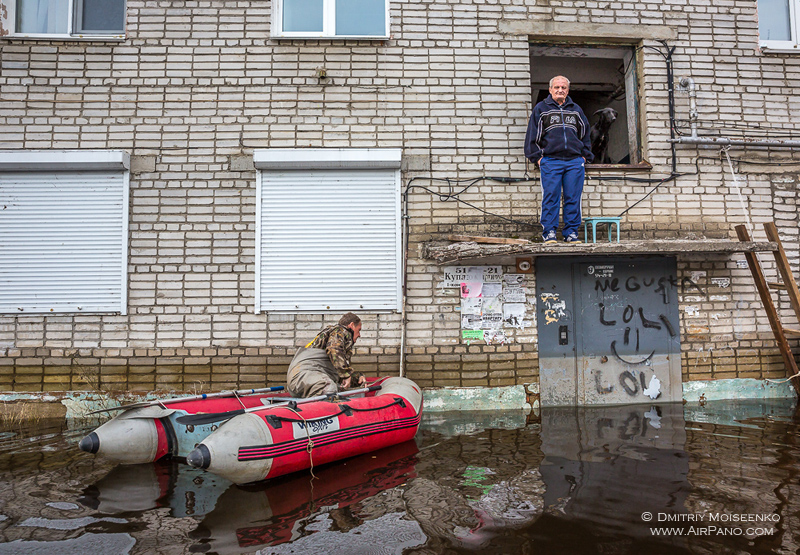
We started our work right after passing Amur River on our way to Komsomolsk-on-Amur. As our helicopter took off, we saw flooded fields, a power station, and suburbs. Remarkably, the life in the city center looked pretty normal: people were going about their business and public transport was going on schedule. The river mostly flooded houses in the suburbs and industrial facilities at the outskirts of the city. Despite of the fact that Komsomolsk-on-Amur got hit by the Big Water much later than everyone else, we were still late for the peak of the flood. However, even this «afterparty» looked shocking: partially flooded roads and mountains of construction debris (broken fences and pieces of small structures crashed by the water) were all over — it was a horrible sight.
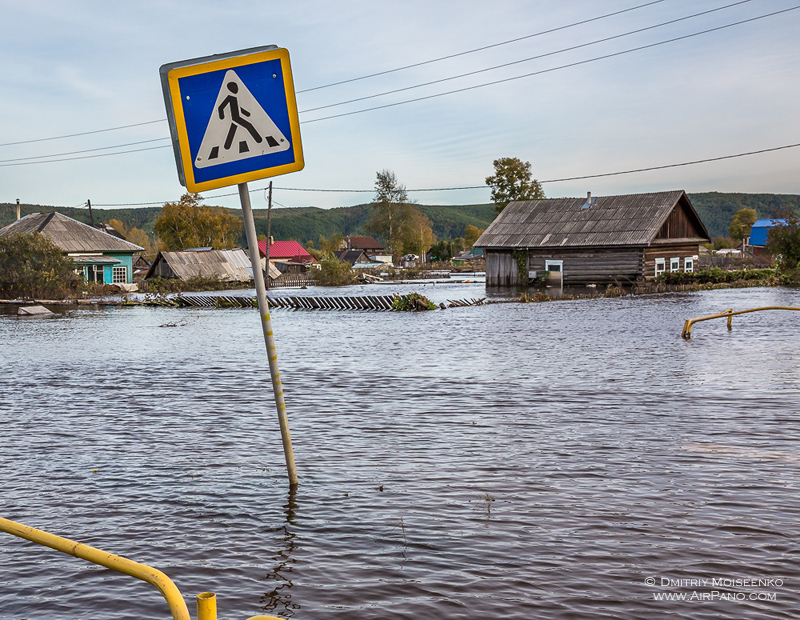
We shoot one of such areas called Parkovy (Parkside). People were wearing waders or using boats to move about. Locals were helping each other. We often heard people calling their neighbors left in the flooded area asking how they are holding and if they needed help.
Who else would know about critical areas in the city, but taxi drivers? We stopped at one of taxi stations, and Dima found out that there was a residential area nearby — high rise district called Mendeleyevsky — that was still underwater. We went there right away.
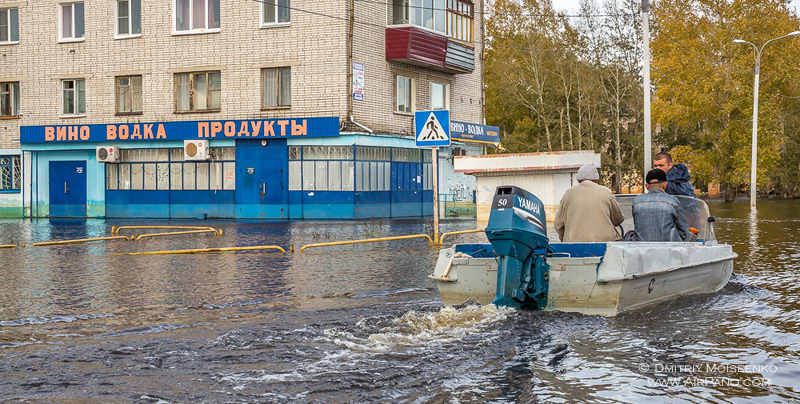
However, it was not so easy to get there by car — for a stretch of almost three kilometers the road was under water. This was where we saw rescue teams and firefighters: they arranged amphibias and all-terrain trucks to transport local residents. Our helicopter took off and shot one of the «convoys» taking people away from the flood to a village.
Two rescue team members, Denis and Yuri, were impressed by our equipment and a quality of images on our monitor, and offered us a lift to the village on their boat. We pack remaining helicopter batteries and went there. It felt very weird to float above an asphalt road in a boat. Denis was on the lookout for shallow places as we slowly made our way through the water. Yuri told us that only a few days ago the water was so high they could go full speed on this road, but at that time the water level was much lower.
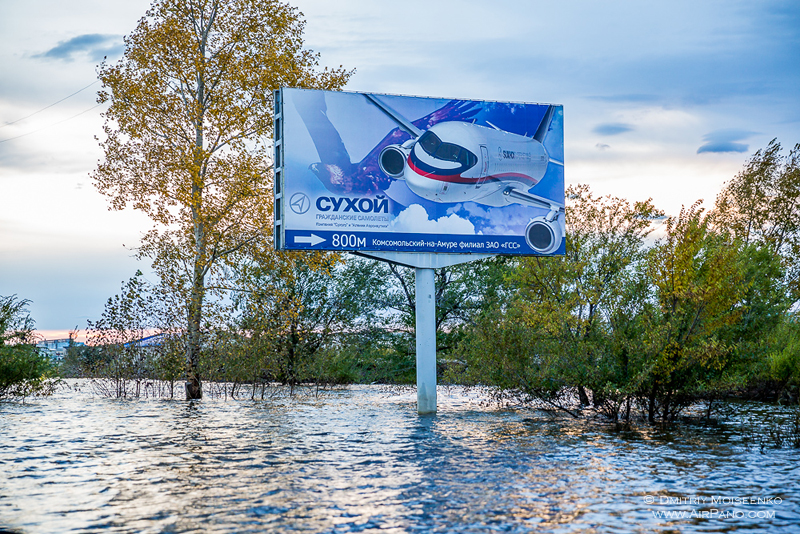
In about an hour we found ourselves in the center of the village: everything looked pretty gloomy. Practically all multi-store buildings were in the water up to the first floor. There were rafts tided at every entrance for boats to dock. The place has turned into «Venice».
We could see gas power generators on windows and balconies. People stayed in their apartments and tried to carry on with their lives somehow. We were told that the electricity has been cut off, but there was gas and running water available at some places.
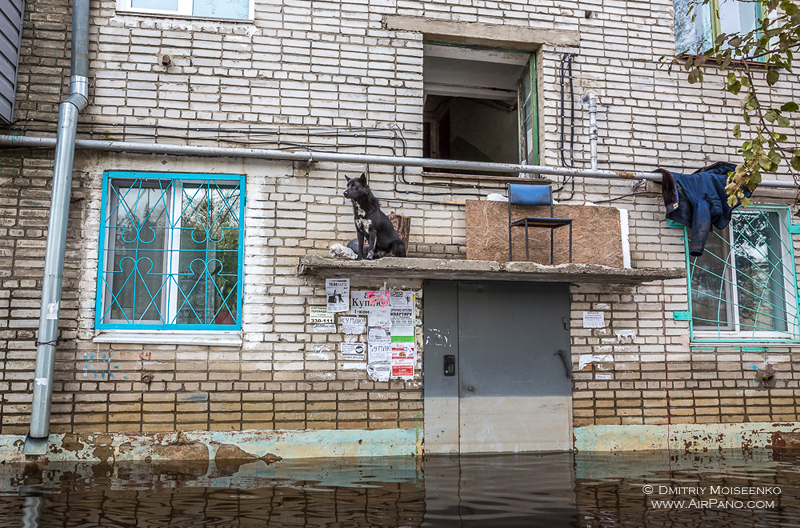
We took off from the front yard, photographed the village, and moved on to the residential suburbs. As we headed out, with much surprise, I noticed a man fishing from his balcony on the third floor...
The suburbs got the worst of it. Parts of the houses were simply washed away by the water. Those left standing exhibited signs of life: dogs were guarding remaining belongings that were moved up on rooftops, cars were placed up on fences and shed roofs, fire wood, and other stuff. At the same time, there was a constant traffic of motor boats and blow-up boats with people going about their business or to help their neighbors.
Yuri and Denis told us that the building of the dam that was supposed to protect this area from the flood started too late. When it was clear that they had no time to finish it, it was stopped thus subjecting the entire area to flooding.
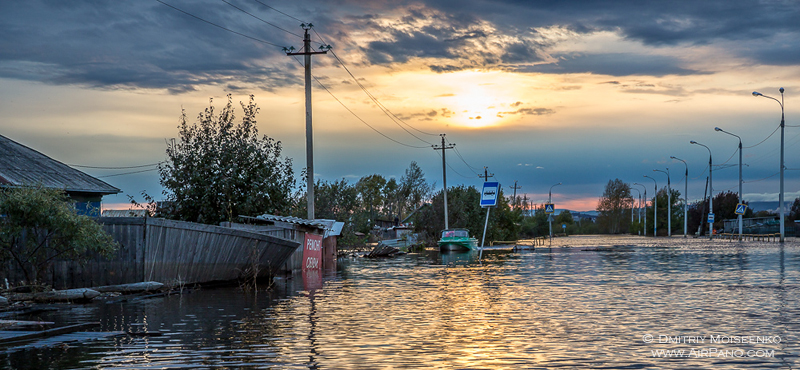
The water was gradually leaving, but nobody knew if it would be gone completely before the frost. If the water stays for another month, when the temperature drops below Zero, foundation of all flooded buildings will be practically destroyed. As water expands in sub-temperatures, wet flooded foundation is bound to crack. Even now people from «water free» buildings are trying to dry them by all means possible.
It is impossible to feel the tragedy of local people by watching it on a TV. While being depressed, we returned to the «big land» and went back to Khabarovsk.
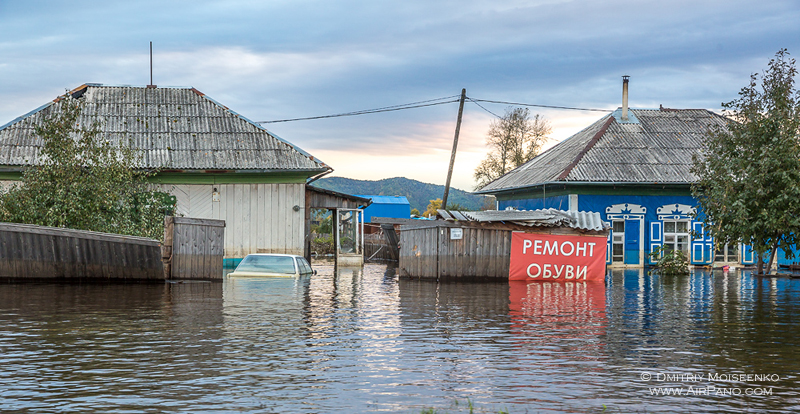
We spent the night in our car by the blocked part of the road — there were no vacancies in motels. During a day we recharged our batteries and drove to check out suburbs of Khabarovsk. Large number of villages and neighborhoods on the left (lower) bank of Amur River were flooded, but most of them were free from their «water captivity».
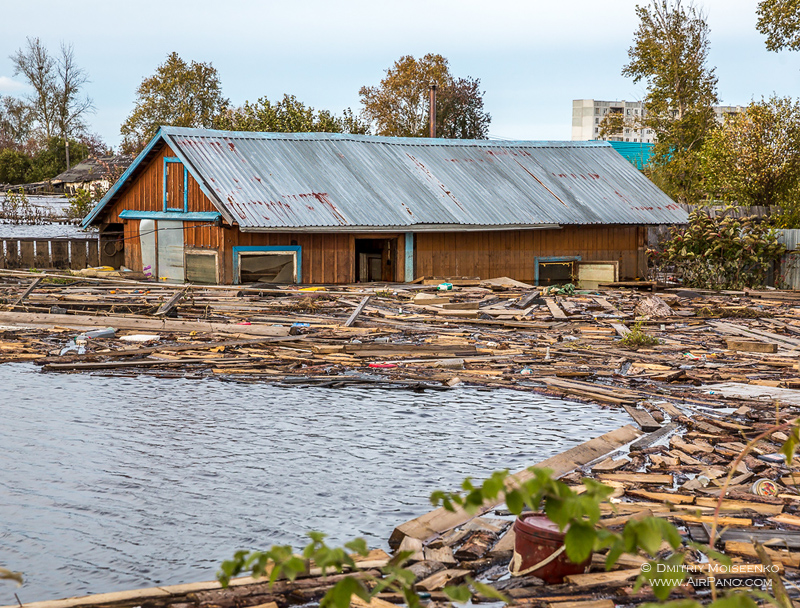
We found flooded houses only near Telman village by the Amur River bridge. The railroad people made a protective dam, but they didn't have time to finish it (or didn't make it high enough) — the village got flooded. And now this very dam doesn't let water naturally flow out of the village like it did in the nearby areas, so firefighters had to pump it out.
In other flood-free places people are actively rebuilding damaged structures...
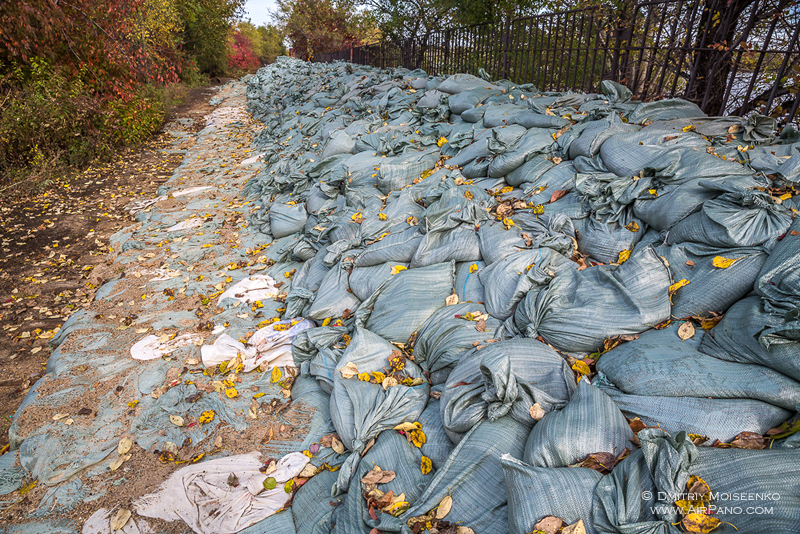
At the end, we would like to thank Anrey Bogatiryov and Alex Perebeynus, our friends from Khabarovsk, for their help in organization of this trip and for real Far-Eastern hospitality! Special thanks to truly khabarovsk citizen — Igor Kuznetcov. If we hadn't accidentally met each other in Moscow and without your further help, this shooting wouldn't happened.
Photo by Stanislav Sedov and Dmitry Moiseenko
28 September 2013
Read more
360° Video
